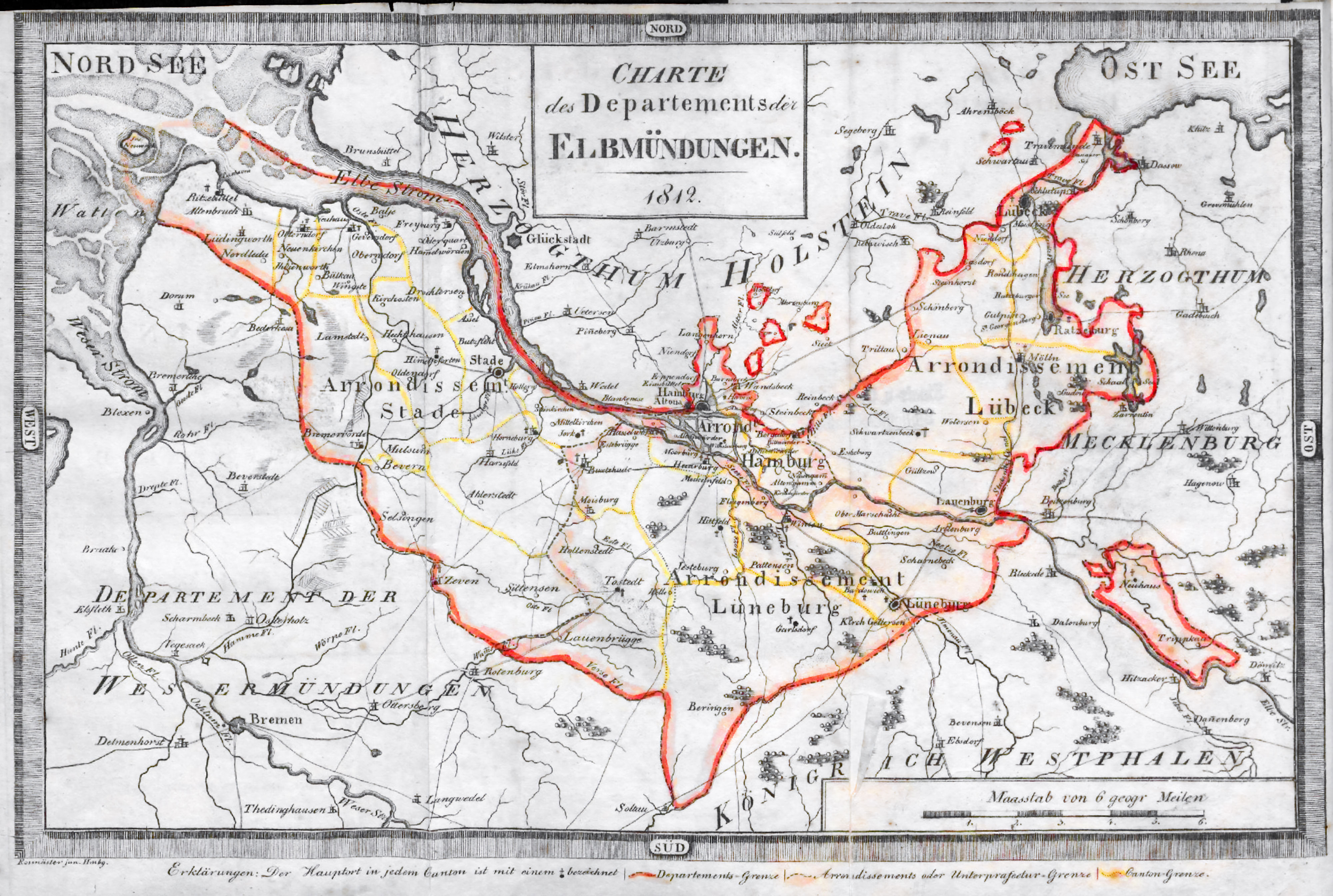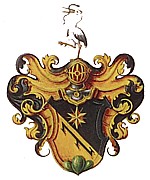|
Henriette Wegner
Henriette Wegner (born 1 October 1805 in Hamburg, died 25 November 1875 in Christiania), née Henriette Seyler, was a Norwegian businesswoman and philanthropist, a member of the Hanseatic Berenberg banking dynasty of Hamburg and the wife of the Norwegian industrialist Benjamin Wegner. She was briefly a co-owner of Berenberg Bank, and was also noted for her work for the homeless in Norway. During her life she was a citizen of the city-republic of Hamburg, of France during the Napoleonic Wars, and finally of Norway from 1824. Childhood in Hamburg Born Henriette Seyler in the city-republic of Hamburg, she was the youngest daughter of the banker L.E. Seyler and Anna Henriette Gossler, and a granddaughter of the Swiss-born theatre director Abel Seyler and of the Hamburg bankers Johann Hinrich Gossler and Elisabeth Berenberg, whose Belgian-origined family had founded Berenberg Bank in 1590. Her father L.E. Seyler was a co-owner of Berenberg Bank for 48 years as well as President ... [...More Info...] [...Related Items...] OR: [Wikipedia] [Google] [Baidu] |
Hamburg
Hamburg (, ; nds, label=Hamburg German, Low Saxon, Hamborg ), officially the Free and Hanseatic City of Hamburg (german: Freie und Hansestadt Hamburg; nds, label=Low Saxon, Friee un Hansestadt Hamborg),. is the List of cities in Germany by population, second-largest city in Germany after Berlin, as well as the overall List of cities in the European Union by population within city limits, 7th largest city and largest non-capital city in the European Union with a population of over 1.85 million. Hamburg's urban area has a population of around 2.5 million and is part of the Hamburg Metropolitan Region, which has a population of over 5.1 million people in total. The city lies on the River Elbe and two of its tributaries, the River Alster and the Bille (Elbe), River Bille. One of Germany's 16 States of Germany, federated states, Hamburg is surrounded by Schleswig-Holstein to the north and Lower Saxony to the south. The official name reflects History of Hamburg, Hamburg's history ... [...More Info...] [...Related Items...] OR: [Wikipedia] [Google] [Baidu] |
Friedrich Seyler
Friedrich Seyler (13 December 1642 – 31 January 1708), also spelled Friedrich Seiler, was a Swiss Reformed pastor and theologian from Basel, noted for his work ''Anabaptista Larvatus'' on Anabaptism. ''Anabaptista Larvatus'' He is noted for his work ''Anabaptista Larvatus'', a major polemical work on the history of Anabaptism and a refutation of Anabaptist "errors." The first part (182 pages) is a history of Anabaptism in 12 chapters, influenced notably by Heinrich Bullinger and Johann Heinrich Ottius. The second "Dogmatic Part" (510 pages) is a defense of the dogmatic doctrines disputed by the Anabaptists from the perspective of Reformed theology. The work addresses God and the Trinity, creation of Man, preservation and government of all things, Adam's fall, original sin, free will, redemption, election, scripture, saving faith, justification, incarnation, The Church, ministers, the ban or church discipline, baptism, communion, state, oath, and future life. According to Har ... [...More Info...] [...Related Items...] OR: [Wikipedia] [Google] [Baidu] |
Anglophile
An Anglophile is a person who admires or loves England, its people, its culture, its language, and/or its various accents. Etymology The word is derived from the Latin word '' Anglii'' and Ancient Greek word φίλος ''philos'', meaning "friend". Its antonym is Anglophobe. History Overview An early use of ''Anglophile'' was in 1864 by Charles Dickens in '' All the Year Round'', when he described the '' Revue des deux Mondes'' as "an advanced and somewhat 'Anglophile' publication." In some cases, the term ''Anglophilia'' represents an individual's appreciation of English history and traditional English culture (e.g. William Shakespeare, Jane Austen, Samuel Johnson, Gilbert and Sullivan). Anglophilia may also be characterized by fondness for the British monarchy and system of government (e.g. the Westminster system of parliament), and other institutions (e.g. Royal Mail), as well as nostalgia for the former British Empire and the English class system. Anglophiles may enjoy ... [...More Info...] [...Related Items...] OR: [Wikipedia] [Google] [Baidu] |
Napoleonic Wars
The Napoleonic Wars (1803–1815) were a series of major global conflicts pitting the French Empire and its allies, led by Napoleon I, against a fluctuating array of European states formed into various coalitions. It produced a period of French domination over most of continental Europe. The wars stemmed from the unresolved disputes associated with the French Revolution and the French Revolutionary Wars consisting of the War of the First Coalition (1792–1797) and the War of the Second Coalition (1798–1802). The Napoleonic Wars are often described as five conflicts, each termed after the coalition that fought Napoleon: the Third Coalition (1803–1806), the Fourth (1806–1807), the Fifth (1809), the Sixth (1813–1814), and the Seventh (1815) plus the Peninsular War (1807–1814) and the French invasion of Russia (1812). Napoleon, upon ascending to First Consul of France in 1799, had inherited a republic in chaos; he subsequently created a state with stable finan ... [...More Info...] [...Related Items...] OR: [Wikipedia] [Google] [Baidu] |
Bouches-de-l'Elbe
Bouches-de-l'Elbe (; "Mouths of the Elbe", ) was a department of the First French Empire in present-day Germany that survived for three years. It was named after the mouth of the river Elbe. It was formed in 1811, when the region, originally belonging partially to Bremen-Verden (which in 1807 had been intermittently incorporated into the Kingdom of Westphalia), to Hamburg, Lübeck and Saxe-Lauenburg, was annexed by France. Its territory is part of the present-day German states of Lower Saxony, Schleswig-Holstein and Hamburg. Its capital was Hamburg. The department was subdivided into four arrondissements and the following cantons (situation in 1812, French translated names where applicable):Almanach Impérial an bissextil MDCCCXII p. 376-377, accessed in [...More Info...] [...Related Items...] OR: [Wikipedia] [Google] [Baidu] |
Napoleonic France
The First French Empire, officially the French Republic, then the French Empire (; Latin: ) after 1809, also known as Napoleonic France, was the empire ruled by Napoleon Bonaparte, who established French hegemony over much of continental Europe at the beginning of the 19th century. It lasted from 18 May 1804 to 11 April 1814 and again briefly from 20 March 1815 to 7 July 1815. Although France had already established a colonial empire overseas since the early 17th century, the French state had remained a kingdom under the Bourbons and a republic after the French Revolution. Historians refer to Napoleon's regime as the ''First Empire'' to distinguish it from the restorationist '' Second Empire'' (1852–1870) ruled by his nephew Napoleon III. The First French Empire is considered by some to be a " Republican empire." On 18 May 1804, Napoleon was granted the title Emperor of the French (', ) by the French and was crowned on 2 December 1804, signifying the end of the French ... [...More Info...] [...Related Items...] OR: [Wikipedia] [Google] [Baidu] |
Percy Ernst Schramm
Percy Ernst Schramm (14 October 1894 – 21 November 1970) was a German historian who specialized in art history and medieval history. Schramm was a Chair and Professor of History at the University of Göttingen from 1929 to 1963. Early life and education Schramm was born to a wealthy and cosmopolitan family in Hamburg, that belonged to the class of Hanseatic families. His father, Max Schramm, was a lawyer, senator and second mayor (i.e. deputy mayor) from 1925 to 1928. His grandfather Ernst Schramm (1812–1882) had been a major sugar merchant in Hamburg and Brazil. His mother Olga O'Swald, grandniece of William Henry O'Swald, also belonged to a prominent Hanseatic family. The young Percy served in the German Army during World War I and went on to study history and art history at several of Germany's elite universities, including Hamburg, Munich and Heidelberg. In 1922, he completed his doctoral studies at the University of Heidelberg under the medieval historian Karl ... [...More Info...] [...Related Items...] OR: [Wikipedia] [Google] [Baidu] |
Welser
Welser was a German banking and merchant family, originally a patrician family based in Augsburg and Nuremberg, that rose to great prominence in international high finance in the 16th century as bankers to the Habsburgs and financiers of Charles V, Holy Roman Emperor. Along with the Fugger family, the Welser family controlled large sectors of the European economy, and accumulated enormous wealth through trade and the German colonization of the Americas, including slave trade. The family received colonial rights of the Province of Venezuela from Charles V, who was also King of Spain, in 1528, becoming owners and rulers of the South American colony of Klein-Venedig (within modern Venezuela), but were deprived of their rule in 1546. Philippine Welser (1527–1580), famed for both her learning and her beauty, was married to Archduke Ferdinand, Emperor Ferdinand I's son. Claiming descent from the Byzantine general Belisarius, the family is known since the 13th century. By the early ... [...More Info...] [...Related Items...] OR: [Wikipedia] [Google] [Baidu] |
Amsinck
Amsinck is a Dutch-origined patrician family whose members were prominent merchants in multiple countries including the Netherlands, Hamburg, Portugal, England, France, Hanover, Holstein, Denmark, Suriname and India. From the 17th century the Hamburg branch of the family formed part of the city-state's ruling class, the Hanseaten or hereditary grand burghers, who enjoyed legal privileges in Hamburg until 1918. Amsinck has been one of Hamburg's great business families over many centuries, and its members reached the highest positions in Hamburg society, including as senators and head of state. A branch of the family were large plantation owners in Suriname. The Hamburg branch retained a Dutch identity for centuries, often intermarrying with other Dutch-origined patrician families. The family is descended from Johan Amsinck (born ''ca.'' 1410–1430), a burgher of Oldenzaal in 1459. His grandson Rudolph Amsinck (1518–1582/90) was Mayor of Zwolle. The flowering plant genus ... [...More Info...] [...Related Items...] OR: [Wikipedia] [Google] [Baidu] |
Meyer Zum Pfeil
The Meyer zum Pfeil was a prosperous Swiss noble and patrician family from Basel. History It appears in Basel in the 15th century and is one of Basel's oldest patrician families, and dominated the city for several centuries together with a handful of other patrician families. The family were prominent merchants, especially cloth merchants, and many family members have served as council members and Mayors of Basel. The family name is derived from the arrow in its coat of arms. Family members used the noble honorific Junker already at the time the family appeared in Basel.Bernoulli, A. (ed.): "Die Familienchronik der Meyer zum Pfeil, 1533–1656". In: ''Basler Chroniken'' 6 (1902), pp. 379–422. Family members include the renaissance humanist Nikolaus Meyer zum Pfeil, the politician Adelberg Meyer zum Pfeil and the Basel mayor Bernhard Meyer zum Pfeil. File:Wandbehang Meyer zum Pfeil zum Luft linke Seite.jpg File:Nikolaus Meyer zum Pfeil und Barbara zum Luft Wandbehang.jpg, Me ... [...More Info...] [...Related Items...] OR: [Wikipedia] [Google] [Baidu] |
Faesch
Faesch, also spelled Fesch, is a prominent Swiss, French, Belgian, Corsican and Italian noble family, originally a patrician family of Basel. Known since the early 15th century, the family received a confirmation of nobility from the Holy Roman Emperor in 1563. It was continuously represented in the governing bodies of the city-republic of Basel for centuries, and three members served as Burgomasters, i.e. heads of state, namely Remigius Faesch (1541–1610), Johann Rudolf Faesch (1572–1659) and Johann Rudolf Faesch (1680–1762). The family was at times the richest family of Basel, and its rise was partially the result of clever marriage policies. In the 18th century, the naval officer Franz Fesch (1711–1775) entered the service of the Republic of Genoa and established a branch in Corsica. Its most famous member, Cardinal Joseph Fesch (1763–1839), was the uncle of Napoleon Bonaparte and was a member of the French imperial family during his nephew's rule. He became a F ... [...More Info...] [...Related Items...] OR: [Wikipedia] [Google] [Baidu] |
Merian Family
Merian is a patrician family of Basel, Switzerland. It consists of two branches (an 'elder Basel line' and a 'younger' one) who were citizens of Basel from 1498 and from 1549/1553. The family were represented in the Grand Council of Basel-Stadt in 1532 and grew to become distinguished aldermen. Its notable members include the 18th century politician and the 19th century banker Christoph Merian, who founded the renowned Basel charity '' Christoph Merian Stiftung''. The younger Basel line includes a Frankfurt sub-branch founded by the engraver Matthäus Merian the Elder (1593-1650), whose descendants became artists during the Baroque period and ran what became one of Europe's largest publishers in the 17th century. Matthäus Merian's daughter was the naturalist and artist Maria Sibylla Merian. Origin and distribution The family name is not limited to Basel, and is also found (in variants like ''Meria, Merian, Meriam'' and ''von Merian'') in Alsace, Lorraine, Provence, Lower Aust ... [...More Info...] [...Related Items...] OR: [Wikipedia] [Google] [Baidu] |
.jpeg)





